American Food for American Families
For more than 90 years, U.S. Sugar has been planting, growing and harvesting nature’s sweetest gifts. We sustainably grow sugarcane, citrus, sweet corn and other fresh vegetables for families across America.
-
1930s and 1940s
Grown From a Vision
 Charles Stewart Mott was the visionary responsible for establishing what stands today as U.S. Sugar, one of the country’s most successful agribusiness operations. Born in 1875 in Newark, N.J., Mott earned an engineering degree from Stevens Institute of Technology in 1897. Upon graduation, he joined the Weston-Mott Company in Utica, N.Y., his family’s bicycle-tire manufacturing company. He worked his way up to President and eventually extended the product line to include automobile tires. He became a major stockholder of General Motors when he exchanged his ownership of the family business for GM stock. That earned him a slot as GM Vice President and a position on its Board of Directors.
Charles Stewart Mott was the visionary responsible for establishing what stands today as U.S. Sugar, one of the country’s most successful agribusiness operations. Born in 1875 in Newark, N.J., Mott earned an engineering degree from Stevens Institute of Technology in 1897. Upon graduation, he joined the Weston-Mott Company in Utica, N.Y., his family’s bicycle-tire manufacturing company. He worked his way up to President and eventually extended the product line to include automobile tires. He became a major stockholder of General Motors when he exchanged his ownership of the family business for GM stock. That earned him a slot as GM Vice President and a position on its Board of Directors.A Family Rooted in Agribusiness
Mott was an astute businessman who was known widely as an automotive pioneer, industrialist and philanthropist. He gained a deep appreciation of farming from his ancestors, who came to the United States in 1645 and farmed the land. Those farming roots led him to arrange the purchase of land and other assets of a failed sugarcane farming and processing company in Florida on April 29, 1931, even though the country was in the midst of the Great Depression. That company, Southern Sugar Corporation, was located in the tiny town of Clewiston on the southern tip of Lake Okeechobee. Mott became its Chairman and renamed it United States Sugar Corporation.
 Innovative From the Start
Innovative From the StartMott invested millions of dollars of his own funds in the sugarcane farming operation and convinced others that the dream of growing sugarcane in the rich muck soils around Lake Okeechobee was not only possible, but it could be profitable.
He revived the company by overcoming the drainage problems that plagued the previous owner and was able to develop varieties of sugarcane suitable for Florida with the help of experts in cane growing and production from Louisiana, Cuba and the West Indies. Sugarcane production increased, the company grew, and by 1941, U.S. Sugar was profitable.
The key to the continued growth of the company was the Clewiston Sugar House. When Southern Sugar opened it in 1929, it could process 1,500 tons of sugarcane per day—with future expansion built into the design. Over the years, it was altered, adapted and enlarged. It continued to set records as the most efficient single-tandem mill in the world, far superior to many newer mills. And although there were many changes, the fundamental process of adaptability remained the same.
-
1950s and 1960s
Expansion-Fueled Growth
 In 1959, the company increased its milling operations with the construction of an additional raw factory on the southeastern rim of Lake Okeechobee. When the Bryant Sugar House opened in 1962, it was the most modern mill in the world. Like its sister mill at Clewiston, Bryant was built with expansion in mind. Its 5,000-ton-per-day capacity was increased again and again.
In 1959, the company increased its milling operations with the construction of an additional raw factory on the southeastern rim of Lake Okeechobee. When the Bryant Sugar House opened in 1962, it was the most modern mill in the world. Like its sister mill at Clewiston, Bryant was built with expansion in mind. Its 5,000-ton-per-day capacity was increased again and again.Blazing a Trail
As others recognized the potential of the Lake area, new sugarcane operations began to emerge. The industry that Charles Stewart Mott pioneered was on the verge of dramatic growth. Florida sugar eventually supplanted the sugar once imported from Cuba—a milestone made possible by U.S. Sugar’s research and technology that drove increased production and milling.
-
1980s
The Next Generation of Farmers
 The 1980s were an exciting decade for U.S. Sugar. Florida became the largest cane sugar-producing state in the nation, and U.S. Sugar was its leading sugarcane producer.
The 1980s were an exciting decade for U.S. Sugar. Florida became the largest cane sugar-producing state in the nation, and U.S. Sugar was its leading sugarcane producer.By then, Charles Stewart Mott had been succeeded as chairman by his eldest son, Charles Stewart Harding Mott. Under C. S. Harding Mott’s leadership, U.S. Sugar diversified into cattle, citrus and vegetables, purchasing South Bay Growers. The sale included 13,000 acres of land and an existing Corrulite container business, but sugarcane remained the heart of the business.
Setting the company apart from competitors were an internal transportation system and an extensive research facility. The private railroad encompassed 1,100 railcars and 120 miles of track that linked the sugarcane fields with the mills. Company-funded research made U.S. Sugar a leader in integrated pest management, global positioning technology and cellular biology research.
In the mid-1980s, employees became the largest shareholders in the company through an Employee Stock Ownership Plan (ESOP). Today, the company is owned primarily by its employees and charitable foundations set up by Charles Stewart Mott—The C. S. Mott Foundation and The Mott Children’s Health Center.
In 1985, the company’s world-renowned cattle operation was converted to orange groves. More than 29,000 acres were planted, and designs were drawn for a new citrus processing plant. It would become the first new plant of its kind built in Florida in over nearly 50 years.
-
1990s
Innovating Sugarcane Refining
 With the addition of the Clewiston Refiner, U.S. Sugar became the first fully integrated refinery in the nation with the ability to take sugarcane processing from field to end consumer. The company was now processing, packaging, warehousing and servicing consumer and retail markets as well as bulk industrial customers.
With the addition of the Clewiston Refiner, U.S. Sugar became the first fully integrated refinery in the nation with the ability to take sugarcane processing from field to end consumer. The company was now processing, packaging, warehousing and servicing consumer and retail markets as well as bulk industrial customers. -
2000s
Continued Expansion
 In 2002, U.S. Sugar undertook a $2.5 million expansion of the sugarcane refinery and added liquid sugar capabilities. The expanded facility was 300,000 square feet and sat on 5.5 acres. Processing capacity rose to 600,000 tons per year. That same year, Southern Gardens Citrus purchased the 3,762-acre Alcoma Groves adjacent to its own Dunwoody Grove, bringing total citrus acreage to more than 32,000 acres.
In 2002, U.S. Sugar undertook a $2.5 million expansion of the sugarcane refinery and added liquid sugar capabilities. The expanded facility was 300,000 square feet and sat on 5.5 acres. Processing capacity rose to 600,000 tons per year. That same year, Southern Gardens Citrus purchased the 3,762-acre Alcoma Groves adjacent to its own Dunwoody Grove, bringing total citrus acreage to more than 32,000 acres.In 2008, the milling and refining facility in Clewiston consolidated and automated sugarcane milling and refining operations. The company took great pride in knowing that it was now operating the world’s largest vertically integrated sugarcane milling and refining facility capable of processing up to 42,000 tons of sugarcane per day and producing 800,000 tons of sugar per year.
In 2010, U.S. Sugar continued its successful and innovative land and water management systems, called Best Management Practices, to help preserve and protect the environment. In October that same year, the company sold 26,800 acres of land to the South Florida Water Management District to assist with the River of Grass Everglades restoration initiative that provides additional water project areas.
Today, U.S. Sugar combines traditional farming values with modern technology to farm 245,000 acres of the nation’s most productive farmland in harmony with nature. As the vision of Charles Stewart Mott continues to unfold, U.S. Sugar is positioned to meet the challenges of the future with the same innovative thinking and respect for its employees and the environment that it has always exhibited.

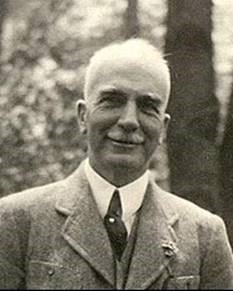 Charles Stewart Mott was the visionary responsible for establishing what stands today as U.S. Sugar, one of the country’s most successful agribusiness operations. Born in 1875 in Newark, N.J., Mott earned an engineering degree from Stevens Institute of Technology in 1897. Upon graduation, he joined the Weston-Mott Company in Utica, N.Y., his family’s bicycle-tire manufacturing company. He worked his way up to President and eventually extended the product line to include automobile tires. He became a major stockholder of General Motors when he exchanged his ownership of the family business for GM stock. That earned him a slot as GM Vice President and a position on its Board of Directors.
Charles Stewart Mott was the visionary responsible for establishing what stands today as U.S. Sugar, one of the country’s most successful agribusiness operations. Born in 1875 in Newark, N.J., Mott earned an engineering degree from Stevens Institute of Technology in 1897. Upon graduation, he joined the Weston-Mott Company in Utica, N.Y., his family’s bicycle-tire manufacturing company. He worked his way up to President and eventually extended the product line to include automobile tires. He became a major stockholder of General Motors when he exchanged his ownership of the family business for GM stock. That earned him a slot as GM Vice President and a position on its Board of Directors.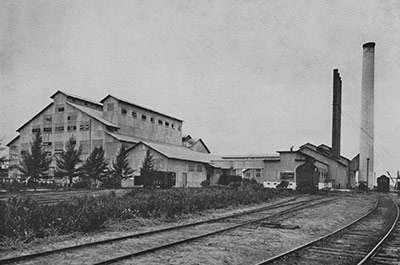 Innovative From the Start
Innovative From the Start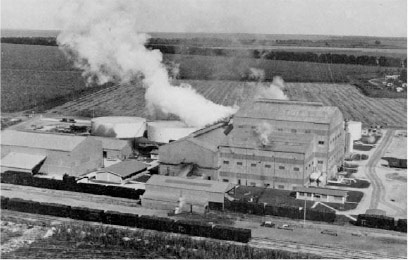 In 1959, the company increased its milling operations with the construction of an additional raw factory on the southeastern rim of Lake Okeechobee. When the Bryant Sugar House opened in 1962, it was the most modern mill in the world. Like its sister mill at Clewiston, Bryant was built with expansion in mind. Its 5,000-ton-per-day capacity was increased again and again.
In 1959, the company increased its milling operations with the construction of an additional raw factory on the southeastern rim of Lake Okeechobee. When the Bryant Sugar House opened in 1962, it was the most modern mill in the world. Like its sister mill at Clewiston, Bryant was built with expansion in mind. Its 5,000-ton-per-day capacity was increased again and again.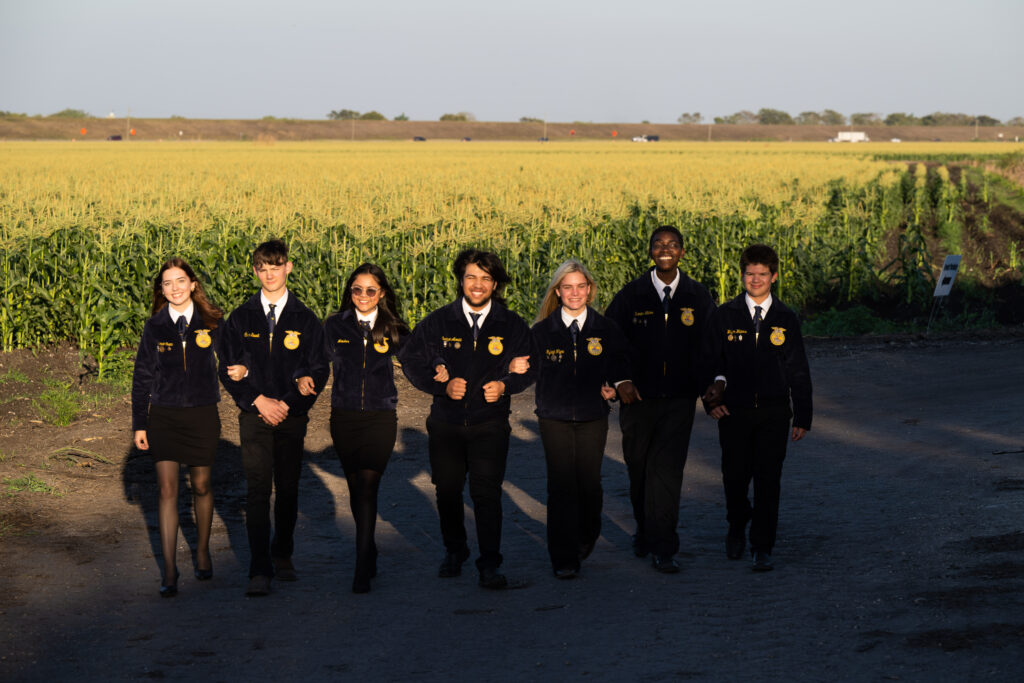 The 1980s were an exciting decade for U.S. Sugar. Florida became the largest cane sugar-producing state in the nation, and U.S. Sugar was its leading sugarcane producer.
The 1980s were an exciting decade for U.S. Sugar. Florida became the largest cane sugar-producing state in the nation, and U.S. Sugar was its leading sugarcane producer. With the addition of the Clewiston Refiner, U.S. Sugar became the first fully integrated refinery in the nation with the ability to take sugarcane processing from field to end consumer. The company was now processing, packaging, warehousing and servicing consumer and retail markets as well as bulk industrial customers.
With the addition of the Clewiston Refiner, U.S. Sugar became the first fully integrated refinery in the nation with the ability to take sugarcane processing from field to end consumer. The company was now processing, packaging, warehousing and servicing consumer and retail markets as well as bulk industrial customers.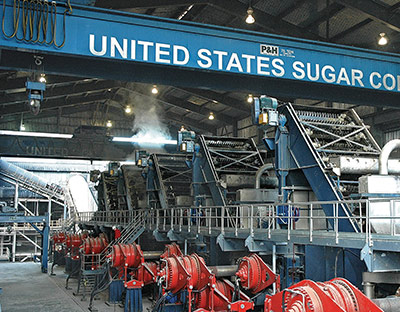 In 2002, U.S. Sugar undertook a $2.5 million expansion of the sugarcane refinery and added liquid sugar capabilities. The expanded facility was 300,000 square feet and sat on 5.5 acres. Processing capacity rose to 600,000 tons per year. That same year, Southern Gardens Citrus purchased the 3,762-acre Alcoma Groves adjacent to its own Dunwoody Grove, bringing total citrus acreage to more than 32,000 acres.
In 2002, U.S. Sugar undertook a $2.5 million expansion of the sugarcane refinery and added liquid sugar capabilities. The expanded facility was 300,000 square feet and sat on 5.5 acres. Processing capacity rose to 600,000 tons per year. That same year, Southern Gardens Citrus purchased the 3,762-acre Alcoma Groves adjacent to its own Dunwoody Grove, bringing total citrus acreage to more than 32,000 acres.